Revisiting Fukushima: Worse Than You Think
The nuclear disaster that occurred at the Fukushima nuclear power plan in Japan in the wake of the earthquake and tsunami that occurred in April has largely disappeared from the American media, where stories about a murder trial in Florida, the wine cooler induced antics of an Alaska teenager, and a Congressman’s body parts have been taking up most of the media attention lately. That doesn’t mean the crisis is over though and, as al-Jazeera reports, it looks like the disaster is far worse than we first thought:
“Fukushima is the biggest industrial catastrophe in the history of mankind,” Arnold Gundersen, a former nuclear industry senior vice president, told Al Jazeera.
“Fukushima has three nuclear reactors exposed and four fuel cores exposed,” he said, “You probably have the equivalent of 20 nuclear reactor cores because of the fuel cores, and they are all in desperate need of being cooled, and there is no means to cool them effectively.”
“The fuels are now a molten blob at the bottom of the reactor,” Gundersen added. “TEPCO announced they had a melt through. A melt down is when the fuel collapses to the bottom of the reactor, and a melt through means it has melted through some layers. That blob is incredibly radioactive, and now you have water on top of it. The water picks up enormous amounts of radiation, so you add more water and you are generating hundreds of thousands of tons of highly radioactive water.”
“We have 20 nuclear cores exposed, the fuel pools have several cores each, that is 20 times the potential to be released than Chernobyl,” said Gundersen. “The data I’m seeing shows that we are finding hot spots further away than we had from Chernobyl, and the amount of radiation in many of them was the amount that caused areas to be declared no-man’s-land for Chernobyl. We are seeing square kilometres being found 60 to 70 kilometres away from the reactor. You can’t clean all this up. We still have radioactive wild boar in Germany, 30 years after Chernobyl.”
It’s been two months since the crisis started, and it’s looks like it’s going to be much longer before this situation is under control:
Gundersen’s assessment of solving this crisis is grim.”Units one through three have nuclear waste on the floor, the melted core, that has plutonium in it, and that has to be removed from the environment for hundreds of thousands of years,” he said. “Somehow, robotically, they will have to go in there and manage to put it in a container and store it for infinity, and that technology doesn’t exist. Nobody knows how to pick up the molten core from the floor, there is no solution available now for picking that up from the floor.”
(…)
Gundersen believes it will take experts at least ten years to design and implement the plan.
“So ten to 15 years from now maybe we can say the reactors have been dismantled, and in the meantime you wind up contaminating the water,” Gundersen said. “We are already seeing Strontium [at] 250 times the allowable limits in the water table at Fukushima. Contaminated water tables are incredibly difficult to clean. So I think we will have a contaminated aquifer in the area of the Fukushima site for a long, long time to come.”
Those are just the highlights, or should I say lowlights, of the article which is well worth reading. Clearly, Japan is dealing with an industrial crisis unlike anything the world has ever seen.
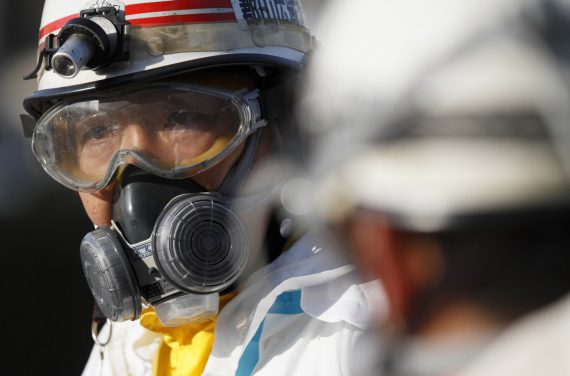

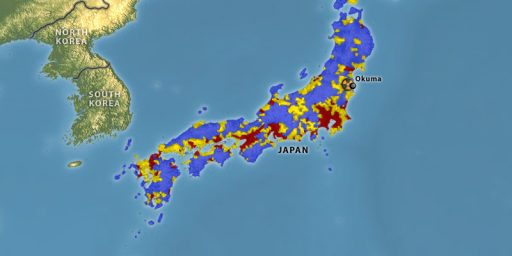
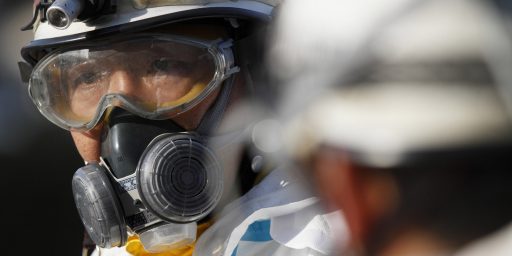
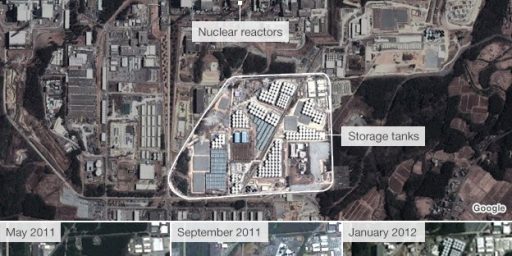
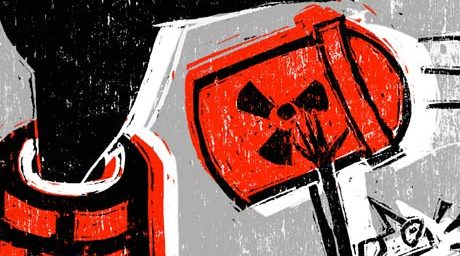
I dropped that link here a few days ago (self-serve economy thread). The fragment I found most scary was:
My big question is whether the current outcome was the inevitable result of the earthquake/tsunami, or if this was more a result of Japan’s seeming refusal to take the disaster seriously as it was starting out and making it far worse than it had to be.
Neither, Stormy.
It is the result of a nuclear plant designed for certain disasters, which then received slightly different disasters.
It’s a little like our California earthquake lessons. We designed buildings and freeways for certain earthquakes, and then received slightly different earthquakes. We have redesigned out here, but we won’t ‘know’ until we see what new earthquakes we get.
“a former nuclear industry senior vice president” … well that settles it if a former “senior vice president” says there is a problem …
I notice he has no scientific credentials so why should anyone listen to him ?
I understand that, but I also remember the disaster was followed by two weeks of Japan telling us that everything was alright, nothing to worry about. If they had responded more aggressively then, could they have prevented the core exposure and containment loss? I’m not saying prevent the disater entirely, but did they perhaps turn a minor incident into a major disaster by letting it fester?
BTW, I don’t want to be a Chicken Little on this one, but:
Missouri River Flood Threatens Nebraska Nuclear Reactors
I’ve heard that airspace over some reactors was cleared, as a safety margin, should there be leaks.
I hope these Midwest plants were designed for the disasters they are receiving …
(I don’t know how much more they could have done in early hours. My total-guess is little.)
I’ve read that they could have mitigated thing significantly by putting boron or seawater in at the beginning, but delayed doing so because they wanted to salvage the reactor, which those actions would have made impossible. They ended up recognizing the reactors were total losses and doing those things later, but by then the situation was far worse.
well that settles it if a former “senior vice president” says there is a problem
You’re right, Jeff, he’s clearly made the whole thing up. There’s actually no problem at Fukushima at all. I’m going on vacation there next week!
Stormy, accepting for a moment that boron would have helped, does it really answer the danger of nukes?
What I’m saying is that human error has always been in the picture, and “we ‘can’ control them” has always been the defense.
(If I look at this as human fallibility and dangerous systems, it doesn’t really reassure me if the human error was at design or at response. Net effect is still “17 Manhattans”)
It seems to me that the most important thing about the Fukishima problems are that they were caused by loss of power. Now, the proximate cause of that was the tsunami, in turn caused by the earthquake, but there are a thousand different ways power to reactors could be cut accidentally or purposefully and, if I recall correctly, there are something like 27 plants in the US with essentially the same vulnerability. When officials at the plants say “it can’t happen here”, what they are saying is essentially, “power can’t be cut off to these plants.” Not very reassuring.
Well frankly JP it doesn’t help that the nuclear reactors in the plant were designed on slide rules.. They are several generations behind in technology and safety. IF Japan was serious they would of already been in the process of adopting/adapting Gen IV designs due to superior safety (including entirely passive shut downs).
Matt,
You have a point. It obviously would have been a tremendous benefit if those reactors were upgraded or replaced. And people were warning about those reactors within the last couple of years but company officials assured everyone that no changes were necessary. And the same goes for the 27 similar reactors in the US – the company officials are saying they are safe and no changes are necessary. As you said: “if they were serious” but someone else said “it is almost impossible to get a man to believe something if it is to his economic advantage to not believe it”.
MarkedMan : Unfortunately too true 🙁